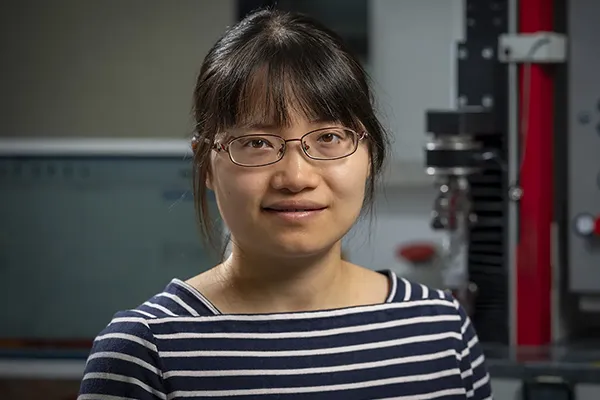Heat Actuated Elastocaloric Cooling
Yi-Ting Hsiau – Hector RCD Awardee Jingyuan Xu
Elastocaloric cooling utilizes stress-induced crystallographic phase transformation which releases or absorbs latent heat upon stress loading or removal. It is a promising next-generation solid-state cooling due to its high caloric effect. However, one of the disadvantages is the huge electric actuator required. This project aims to integrate actuators driven by low-grade heat to reach the goal of reducing driver-to-refrigerant mass ratio and zero electricity input.
Superelastic NiTi-based shape memory alloy (SMA) has been widely studied in elastocaloric cooling because of its superior performance from the reversible martensite phase transformation. Meanwhile, NiTi also possesses the shape memory effect which enables the material to return to its pre-programmed shape when temperature reaches the threshold.
This project is dedicated to combining the two effects of SMA to develop a zero-electricity cooling device that utilizes superelastic SMA as an elastocaloric refrigerant and shape memory SMA as a heat-driven actuator for providing a stress field. By changing the temperature of the SMA actuator, it can exert actuating force and displacement to strain the superelastic SMA film to utilize the elastocaloric effect from the stress field alternation as a way to achieve heating and cooling.
Throughout the research, prototype devices will be developed to analyze the performance and optimize the design. The goal of this project is to reduce the oversized driver-to-refrigerant mass ratio in current elastocaloric cooling devices by replacing high power consumption actuators with compact heat-driven actuators. The innovation will move the research field a step toward net-zero thermal management by neglecting electricity input but only utilizing low-grade heat and keeping the high performance concurrently.
An electric actuator is replaced by heat driven actuator which periodically apply strain to the superelastic refrigerant film. The latent heat of the refrigerant film is released to a heat sink while the stress field is applied and the cooling target is cooled down as the film absorbs heat from it when stress is removed.

Yi-Ting Hsiau
Karlsruhe Institute of TechnologySupervised by

Jingyuan Xu
Engineering, Energy & Material Engineering

